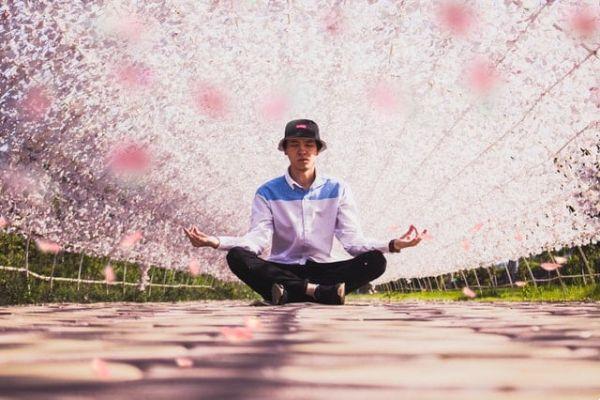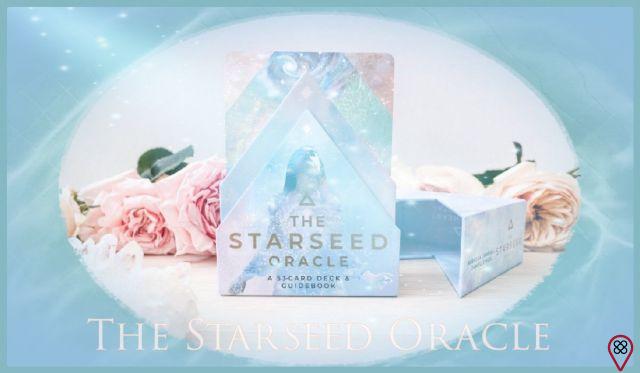We have arrived at our seventh and final key of the Caixa Preta series. As we can see, to access our Creator Center, we need to understand that the black box is not limited to the brain but in the brain X heart alignment. Thoughts and Emotions aligned with the Divine Hue manifest our Perfection with lightness, harmony and glory. Balancing these two centers is the master key that opens all doors. Above all, it is the path to the Awakening of our Divinity.
In the first text I wrote for Eu Sem Fronteiras, I talked about the power of sound frequencies, with the title A Caixa Preta e os Floralis Sonoros. This is definitely the foundation of the fundamentals. All there is is a sound composition shaped by our thoughts and emotions. This is why some shapes are harmonic and others are not. Considering that we are the ones who interfere in the internal and external universe, nothing fairer than learning to use the sound frequencies of our feelings aligned with the power of the word to rebuild our world. To bring to reality what we long for, the Fullness of Love.

Everyone can reach that state of freedom, joy and lightness so sought after that I like to call the Mind of the Inner Christ. The awakening of consciousness so familiar to Buddhist monks, lamas, yogis, dervishes and so many other seekers is achieved, but it is fleeting. They are moments of unity and full happiness (Ananda) of this state also called Samadhi, Satori, Buddhato or Christ Consciousness, which once experienced can never be forgotten. It completely transforms your life. And one of the most powerful tools for connecting with the divinity within are mantras.
The word mantra is of Sanskrit origin and means mind control, stilling or instrument to silence thought (man = can be translated as mind, as it means to think, thinking being, substance and mental body | tra derives from the word trana, liberation or instrument , lever). According to Sivananda, it derives from the word trayate, which means to free oneself. But not only silence but also access the mysteries of the Universe.
Its plural is “mantram”, but in the West it has become common to use “mantras”. According to historians and anthropologists, mantras originate in peoples of archaic culture and primitive or tribal societies whose healers and priests received the generic name of shaman.
The word shaman is adopted by anthropology as saman, which means “inspired by invisible beings”. They are the shamans generically called magicians, healers or sorcerers who use different techniques with sounds of power and chants for their people and for themselves in order to obtain more happiness, health, transcendence, enlightenment and interaction with their gods and divine beings of the world. nature. For centuries, shamanism spread throughout the world and with it mantric practices. Its use is now better known in India, but there is still much more to be said on our path towards the metaphysics of sound.

OM, the sacred word of the Hindus, is one of the oldest known. Over 5 years ago, probably in ancient Sumer, Om was known and used as a secret word by Sumerian mystics and priests. When the Indo-Aryan tribes went from Sumer to northern India, they took with them OM, the secret and precious word. In the oldest known Indian scriptures, OM always has a place of prominence. Almost all mantras and hymns begin and end with OM. It is also used alone, as a mantra, being considered the most powerful, according to Swami Vishnu Devananda. The syllable OM is considered the primordial sound of the Universe (uni = God/Goddess | verse = manifestation). Thus, it can be said that Om is the beginning, middle and end. It is totality. According to the Mandukya Upanishad, Om is the one who exists, who has existed and will always exist. It is called in India by the matriká mantra, the matrix sound, matriarchal, which gave rise to everything.
The origin of mantrams in India also takes us to this millenary past, when yogis who lived in deep meditation or self-investigation, called sadhus, practiced sounds with the most varied objectives, the main one being the recognition of the being, mental calming, concentration and Samadhi – Enlightenment. After several generations of mantric practice, the sadhus empirically determined the Sanskrit language as ideal for the vocalization of sounds, which were repeated to exhaustion and, if they worked, were incorporated into the tradition.
The oldest written references to mantrams are found in the vedas, sacred texts from the East, which appeared between 6000 and 2000 BC The word veda derives from the root vid, which means understanding or wisdom. These texts were written in archaic Sanskrit and are divided into four parts: Rig, Sama, Atarva and Yajur.
Mantras work directly with the mental aspects, directing and focusing all mental power on a goal or objective. Many of them have the power to provide satisfactions such as fulfillment in love, prosperity, good health and popularity. There are also those that work against stress, those that calm down, increase or reduce heartbeats and even those that help ward off aggressors. Within Hinduism there are also those who are dedicated to mantra yoga, one of the oldest branches of yoga. They are based on the vocalization of sounds taught by their masters, who knew the sound frequencies and their powers of action on the body, the mind and the awakening of the supreme energy of life (Prana for the Indians, libido for Freud and chi for the Chinese). ). Over the centuries, mantras have gained strength through the collective unconscious or egregore (repetition force).
This practice leads us to calm mental activity and stabilize thoughts, thus triggering other perceptions and putting us in touch with our essence. The constant mantric practice leads to an introspective, silent state, which allows an inner dialogue with what is most essential in our being, the mano-bindu, that is, with our real center, in which the purusha (consciousness) operates. . As we go deeper into mantric practices, we reach a high degree of self-knowledge and develop intuition, we become more sensitive, receptive and less rational.
The effects of mantras are perceived in our body because of the so-called resonance or “sympathy” of the sound, which releases powerful vibrations in the body. The science that practices mantras and their metaphysics is called in India sphotavada pam. In this science the mantra is a single phoneme or a series of phonemes combined according to schemes transmitted by the masters to their disciples.
He who knows the secret of sounds knows the mystery of the whole Universe, for divine sound is the cause of all creation. -Sufi Hazrat I. Khan
Generally all words are mantras, because what we say or think is endowed with strength. Thus, when we offend someone, we create a negative energy force against that person and against the environment in which we are inserted, through field resonance. Making an insult is bad for the speaker, the listener and the one being talked about, but the masters of the past make it clear that the one who emits is the most harmed by being the propagator.

The goals of mantras are as varied as possible. We can even generalize saying that for all purposes there is a mantra. The mantra is a powerful "physical form", made up of syllables with psychophysical vibrations endowed with energetic properties. The main objectives are:
• Power to remove ignorance (avidya);
• Power to reveal truths (oharma);
• Power of internal purification (kriya);
• Power to perform liberation (moksa).
The vocalization of mantric sounds is not a procedure restricted to Hindu traditions, as is commonly thought. Muslims chant very rhythmic prayers, accompanied by a tasbeeh (a kind of rosary). Roman Catholics also have a Latin mantra and their prayers are often told in a rosary. Benedictine monks are a clear example of the power of mantras, as in their Gregorian chants they use the power of words in specific notes, octaves and frequencies, known as the six magical frequencies. There are egyptian, shamanic, celtic, kabbalist and runic mantras, all endowed with enormous evocative power, generating and transforming mental energy. Most are in dead languages, such as Latin, Aramaic, Archaic Hebrew, Sanskrit, which, being unchanged, preserve the strength of tradition.
The word mantra also has other meanings: sacred language, sentence, text, Vedic hymn, prayer, prayer, spell, conjuration, verse or mystical incantation formula, etc.
A mantra is a symbol, the reality symbolized and the sign it symbolizes.
There is an occult correspondence between the letters, the syllables and the subtle organs of the human body, and also between these organs and the latent or manifest forces in the cosmos.
Mircéa Éliade

All mystery schools, such as the Rosicrucian, Gnostic and Egyptian ones, both in the Americas and in Europe, use mantric practices in the most advanced stages of their teachings and initiations. They study the so-called “divine word”, which, according to occult knowledge, was used in the creation of the Universe. This verb is known in several ways, among some peoples, such as:
• to the Egyptians: word of Ptah;
• for the Arameans: word of Marduk;
• for the Greeks: Logos;
• for the Norse: the breath of Odin;
• for Westerners: Luz or Fiat Lux;
• for the Hebrews: Menra.
For our purposes, we will focus on Egypt, whose practice of the Power of the Word is known as Dabraka. These sacred sounds are part of the ancient traditions, the school of Ptah Otep and the wisdom of Ferish, based on the origins of Jewish kabbalah and the Cabalion, text of Hermes Trismegistus the thrice great. This wisdom, which was long considered secret, is now known as Kabash and disseminated in the West by mystical schools. In the list below, these are known as strength and power practices.
Before using a Dabraká, it is necessary to keep in mind that it cannot be used lightly, at the risk of ending up attracting dense energies. It is also advised to wash your hands before exercising. It should be practiced once a day, preferably at bedtime and for a maximum period of ten minutes. It can be repeated mentally in the brow chakra or even mantralised. I advise you to always follow the exercises in the previous text of Key 6.

Abitoj – aaaabiiiiiiitooooojjjjj… To get in touch with individual nature. Practice sitting silently.
Azu Birí – aaaazuuuubiiiiiiiiiiíííí… To become more tolerant and full. Practice standing with a lit candle behind your body so you can observe your shadow.
Ummmmm Shet – soooo sheeeeeee ttttttt… To manage stress. During practice the arms should be joined to the chest in an X shape.
Mishalá – miiiiii shaaaaaaaaa lááááááá… To eliminate past traumas. Practice should be done at night, with your eyes on a candle.
Abturá – aaaaabbbbtuuuuuráááááá… To obtain good auspices (blessings) in pregnancy. The pregnant woman practices it with her hands on her belly.
Shumajet Ati – shuuuuumaaaajeeeeettttt aaaaatiiiii… To facilitate the interpretation of dreams. It is practiced sitting while watching the flame of a candle, to remember the dream images.
Baraká – baaaaa raaaaaa kááááá… Maximum mantra of this auspicious tradition that brings us feelings of emotional peace. To chant this mantra, stand facing the sun and with your hands crossed over your chest.
Ja Ha Nut Ané – This dabraká should be used to achieve self-control, especially when you are getting irritated easily. The correct pronunciation is “JA RÁ NUTI ANÊ”. The posture indicated in the practice of this Dabraká is kneeling. You can light a candle or just imagine a light in front of you and next to you.
Tzair Abú – This dabraká should be used to cleanse the body of dense energies, give clarity to the mind and balance the emotions. The correct pronunciation is “TIZAIR ABÚ”. After showering and before getting out of the shower, while concentrating on Tzair Abú, stay for a few minutes letting water fall over your head. Then bend your body a little and let the water fall over your back, in the region close to the kidneys.
Zi Emej – This dabraká is indicated for those who have pain in the spine or head. The correct pronunciation is “ZI EMEJE”. This Dabraká must be used to transmit energy and assist in the healing of others. If the problem is in the spine, place your right hand on the pain and your left hand up. Visualize the ZI in the right hand and the EMEJ in the left hand.
Sha Bar Atzi – This dabraká is indicated to give peace in dreams, improving their quality and fighting insomnia. The correct pronunciation is “SHAR BAR ATIZI”. When your children are asleep, enter the room and point your index and longer fingers of your right hand at their forehead. Focus on Sha Bar Atzi and think, “Go on dreaming, son. May your dreams be harmonious and lead you to a future of happiness.” It can also be applied to anyone for whom you have any feelings.

These are just some practical examples that you can start using right away. The larynx has an intimate relationship with our creative energies, so it is like a uterus. When we become aware of how powerful this energy is, we take more care of our verb. We no longer fit inharmonic, arrhythmic words, curse words, gossip and backbiting. With the same tongue, we bless and curse our fellow men, who are the image and likeness of the Perfection of the Source. No one has the right to judge or condemn anyone! No source produces salt and fresh water at the same time. You cannot be walking the Way and speak sweet and bitter words at once.
In the womb, the sound, the vibration of our mother's voice, her heart rate, her emotional waves, the orchestra of her organs in operation, of the cells that are born and die began as our first contact with the vibrational richness of the outside world.
Sound vibration is the raw material with which we create our library of memories, internalize scales of emotions, and generate the first patterns of our emotional intelligence, storing and building knowledge based on the intonations and expressions used by our parents and caregivers, building thus the structure of our emotional lexicon.
Everything around us generates waves, reaction, vibration. Everything really vibrates. The human body is a sound box, a resonance device capable of producing a scale of 52 essential sounds that form the basis of verbal frequencies. The spoken word, although emitted at throat level, reverberates throughout our entire body. The repetition of a therapeutic mantra, or word of power, will clean the crystallized and dark memory, reprogramming it with a more positive, healthy, happy message.

Minds that vibrate more focused produce harmony and balance around them.
But, before you start using the Dabrakas, you must first understand how the resonance of your words resonates within. With this self-observation we will understand exactly what information we emit with our words.
Let's do the following exercise:
Speak out loud 7 times each decree and feel the reaction in your body:
I AM HAPPY!
I AM ABUNDANT!
I AM BLESSED!
I LOVE MYSELF!
I AM PROSPEROUS!
Do not judge. Just observe yourself and write down the sensations. It doesn't matter what you want, but how you feel. When you speak, you are sending out a clear signal, a frequency of vibration, which resonates throughout the body when spoken with emphasis and purpose. When the word does not vibrate comfortably, it means that we have beliefs to be transmuted. Write down everything.
FUNNEL
Now take your notes and let's go to the second part:
Unpleasant sensations: to polarize, we need to create phrases that transmute each of the unpleasant sensations. Example: if you said I am prosperous and felt tightness in the heart or any discomfort, you can change the command to I Am the Immediate Transmutation of any limit created by my external consciousness.
Make the new polarization decrees, observe and write down;
If you still have unpleasant sensations, funnel new polarization commands until you are left with a decree that feels comfortable and safe;
Balanced sensations: means that the decree resonates and generates a result of vibrational change.
You may also like
- Awaken a new awareness in you
- Face your spiritual awakening with willpower
- Find out what to do after awakening your conscience
Absorb the information that enters your field in this eternal now and turn it into opportunities to change yourself and everyone who enters your field. Because this is inevitable. The higher your vibrational pattern, the more people will come to you to learn more about the fullness of life.
As I said in the previous text, spare no effort in practicing the proposed exercises. They are based on ancient exercises in the art of hermetic magic present in my books “Quantum Alchemist” and “Verbopuncture Therapist”. And, yes, they work. Hundreds of thousands of people have already benefited from the information and techniques provided by the Sete Chaves da Caixa Preta. Your turn has come.
Without the dominion of the Power of the Word, we will have great difficulty in living the fullness with which we were born to bring to reality.
If you want to know more about the Sound Frequencies domain, just visit my website. It has much more information available, testimonials, videos and the like.
Much Light and Love in this new beginning.
Transcend yourself with lightness!
See you later less.

























